
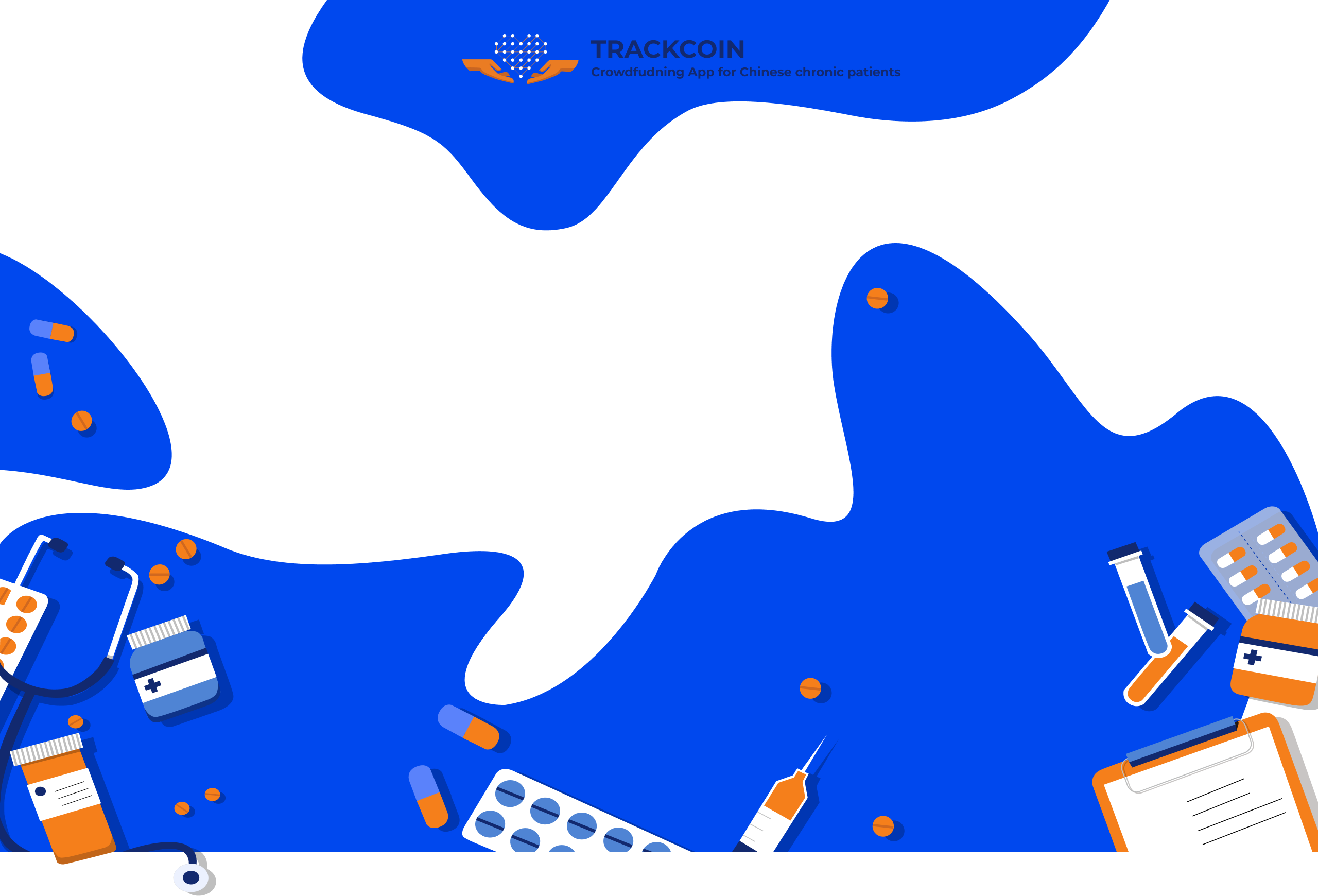
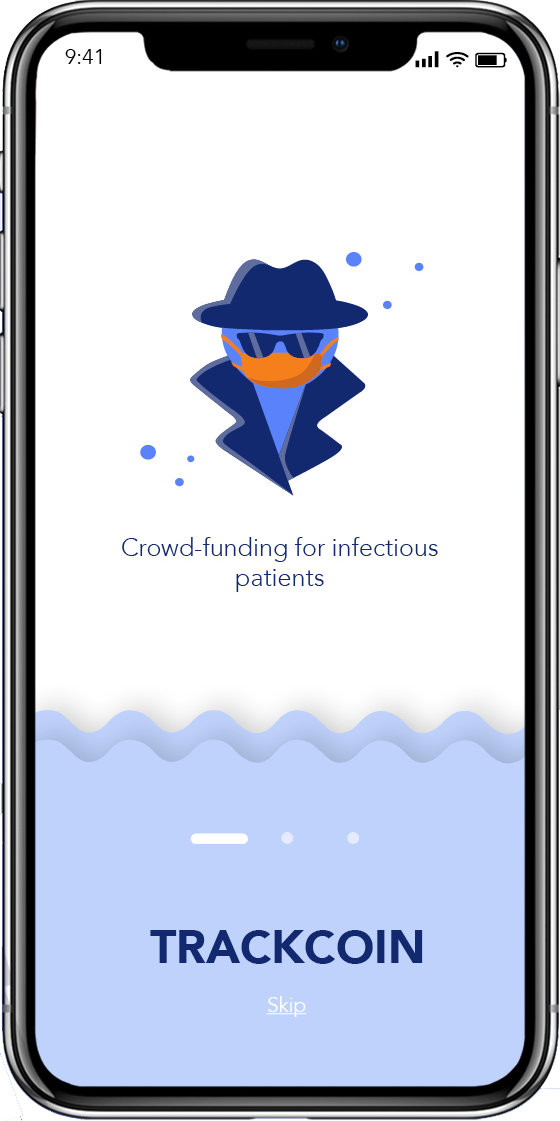
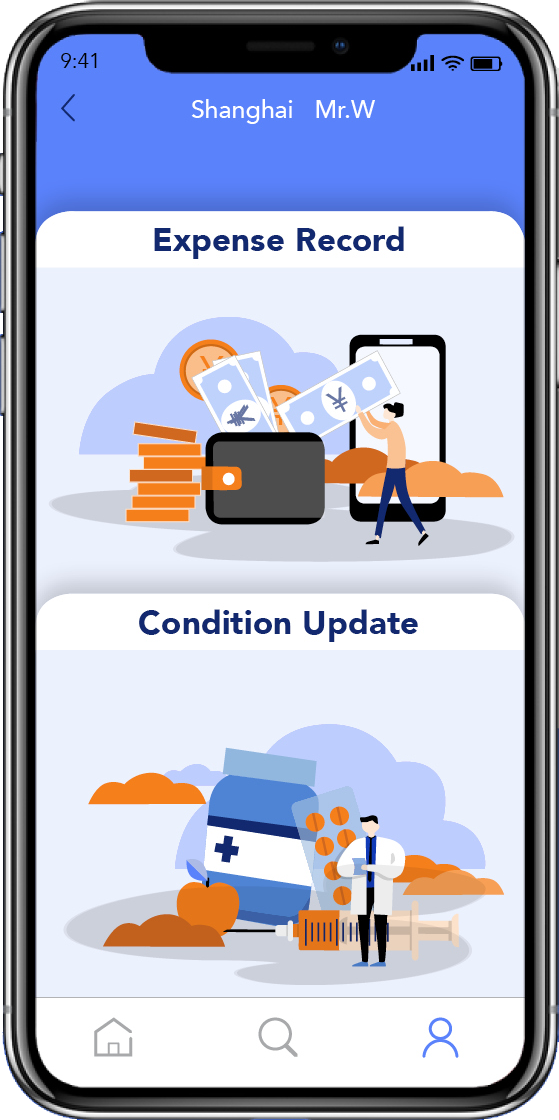
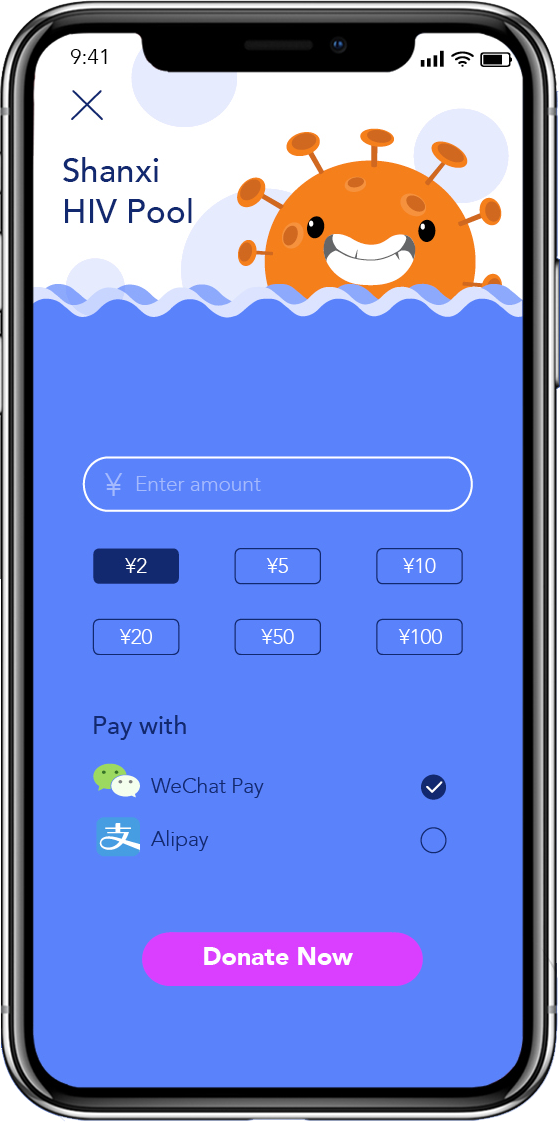





TEAM: Bihan Li, Haiyun Wu, Tianjiao Wang INSTRUCTOR: Haoran Li TIME: 1 month TYPE: Academic project MY ROLE: UX designer/Graphic designer/Strategist/ Researcher
How to encourage potential donors to contribute despite the anonymity of infectious patients?

By leveraging Federated Blockchain Technology, we aim to enhance donors' trust and foster emotional connections with them.

Use blockchain for transparency and trust in the donation process.

Provide feedback to show donors the real impact of their benevolence.
China's ranking in the "World Giving Index" has consistently been low, with 95th place in 2021 and 142nd place in 2018. The country's low willingness to donate can be attributed to several factors:
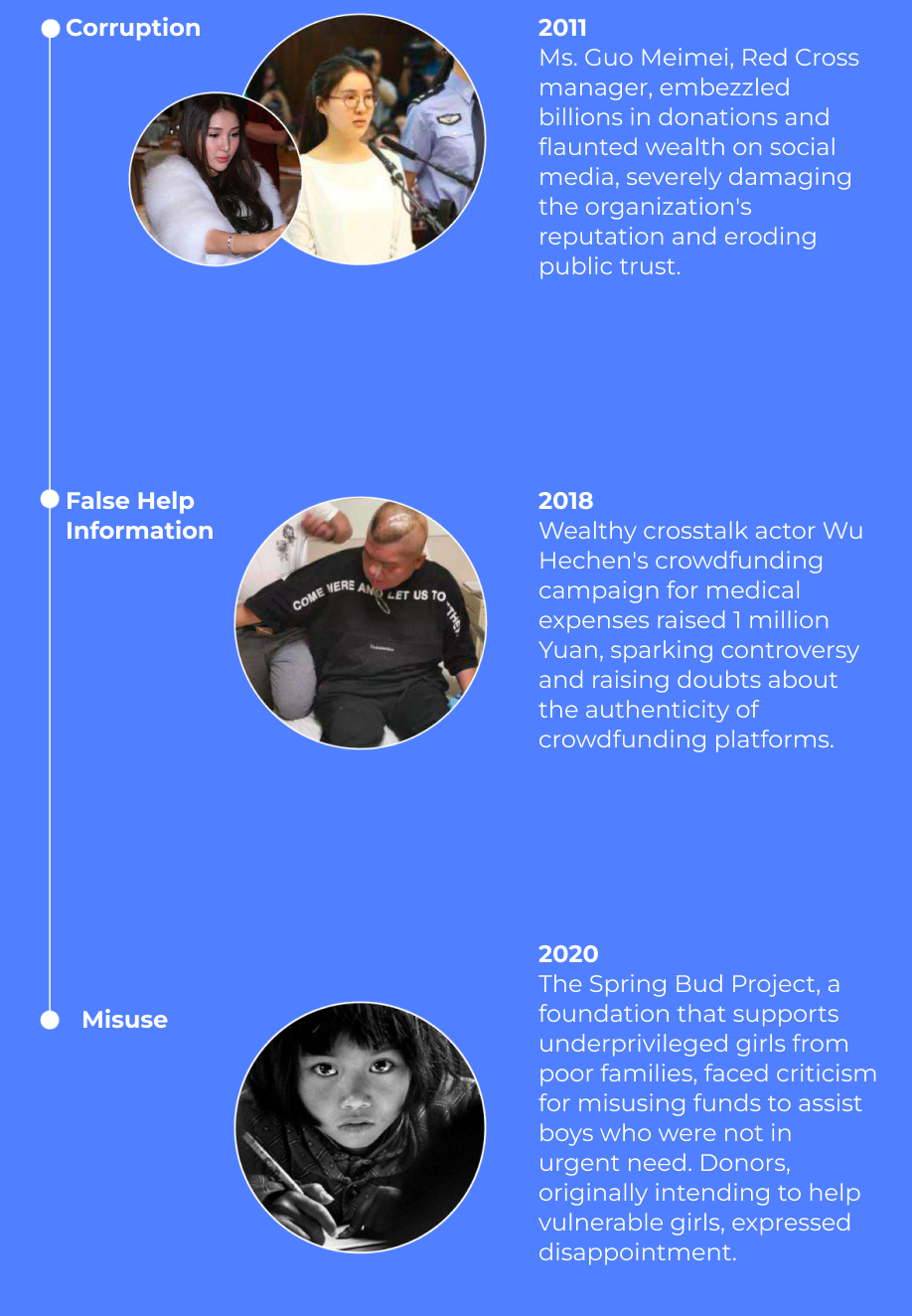
In China, it's challenging for infected patients to receive donation support. In 2016, only 1.4% of total contributions went towards aiding infected patients. This is despite a significant number of individuals with chronic infectious diseases needing financial assistance.
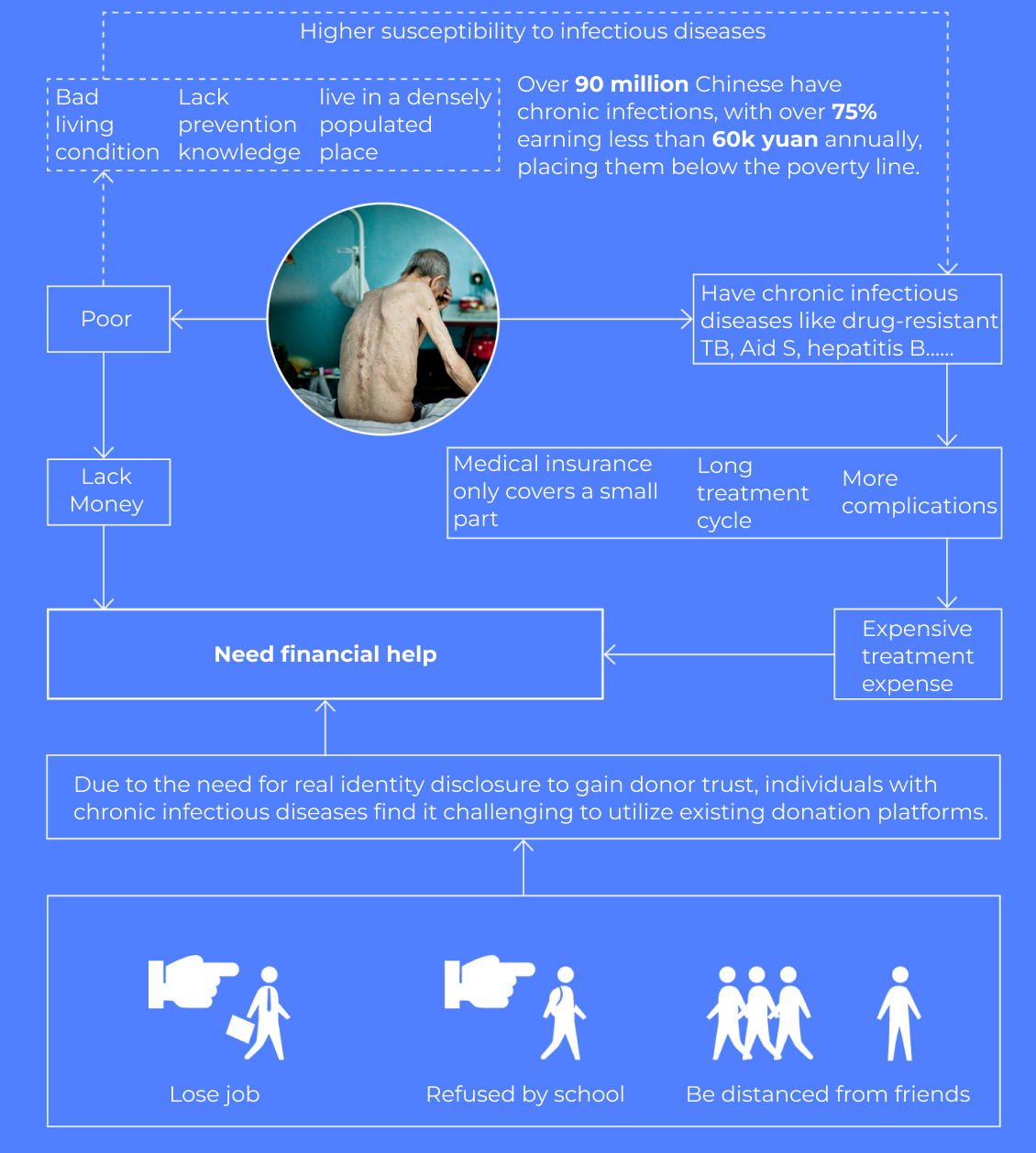
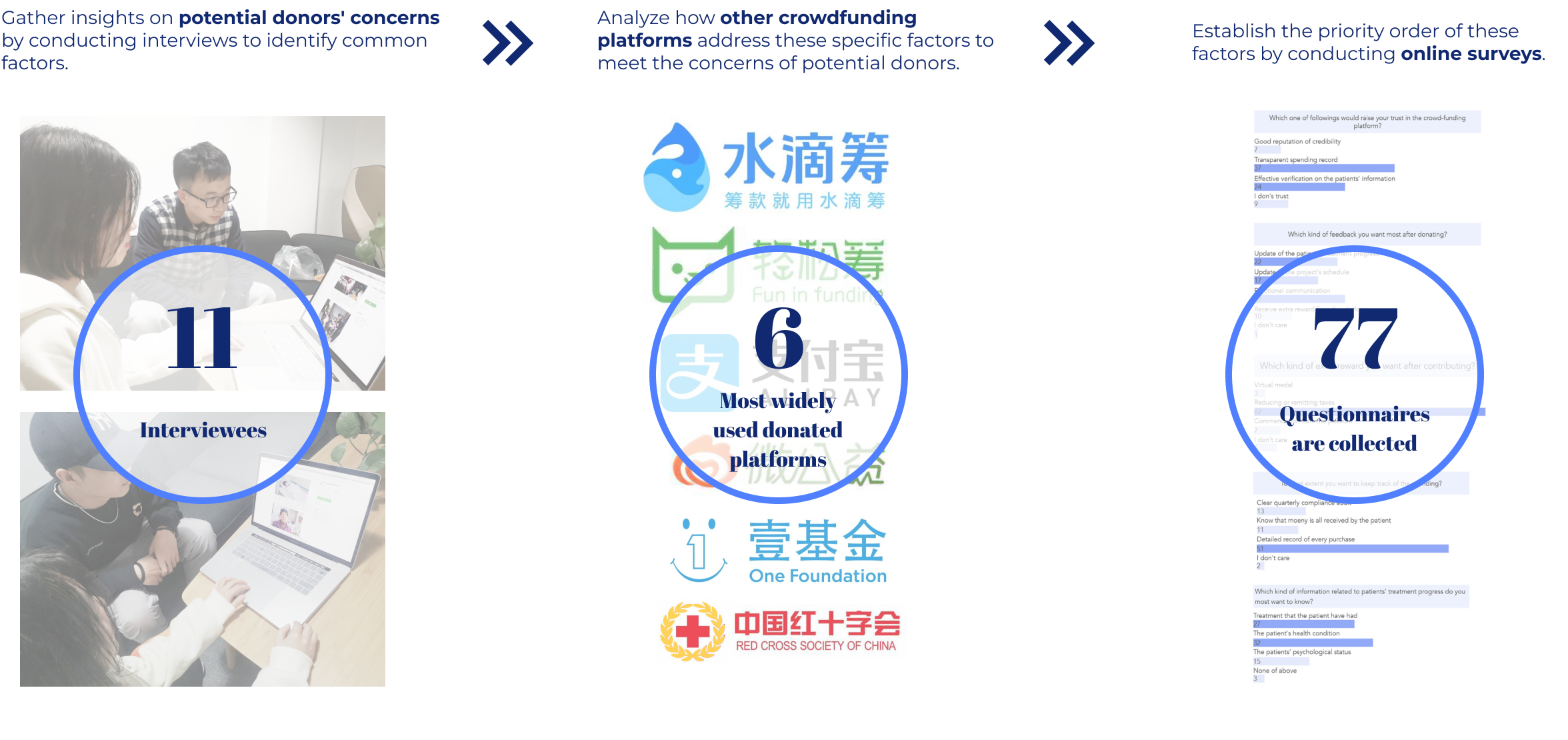
We conducted interviews with 11 individuals to gather their perspectives on online crowdfunding platforms dedicated to raising funds for major medical expenses.
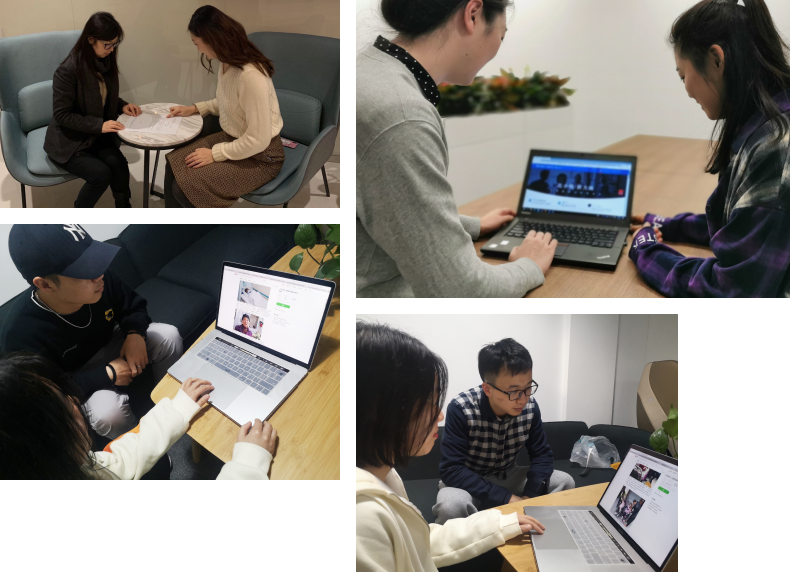
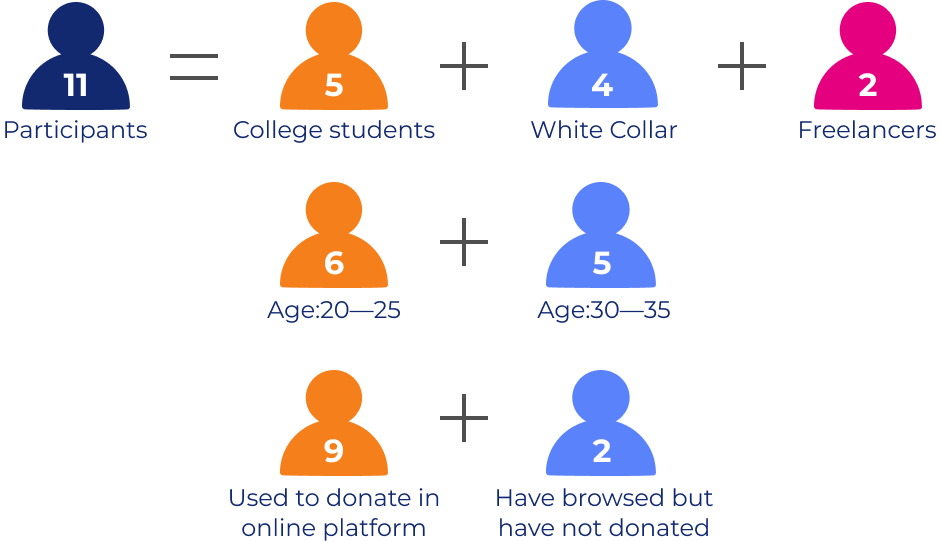
To gather comprehensive feedback, we posed 9 open-ended questions to the interviewees, enabling us to capture a wide range of perspectives. Subsequently, we categorized the feedback into 4 distinct groups.
Before: Decision making
In progress: Donating
After: Receive feedback
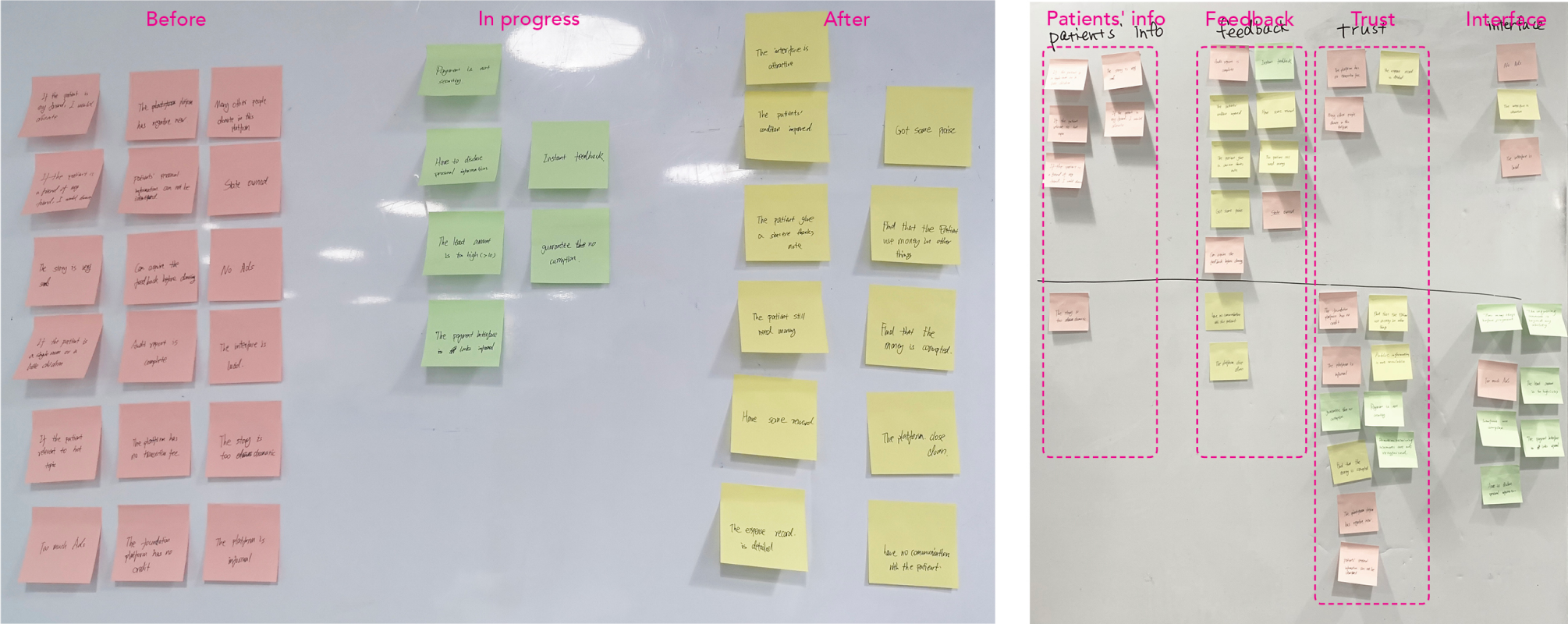
The biggest pain point of contributing money on donation platforms is that most donors do not trust platforms. It is a determinant of whether they would donate or not.

All the interviewees mentioned that they want to receive proper feedback after donating: Has the situation of the help seeker improved? Can I receive some extra reward like some real privilege or virtual medal? Would the patients give me a thank-you note? The interviewees also show a positive attitude to do the next donation if proper feedbacks are available.

More than five interviewees said disclosing patients' information would augment the authenticity of help seekers' stories and also raise donors' sympathy. Thus the interviewees prefer to donate to help seekers who provide more comprehensive personal information.


To acquire more detailed information, we researched the 6 most well-known Chinese donation platforms. We analyzed their features of raising trust, providing feedback, and exposing patients' personal information according to the above-mentioned interview insights.
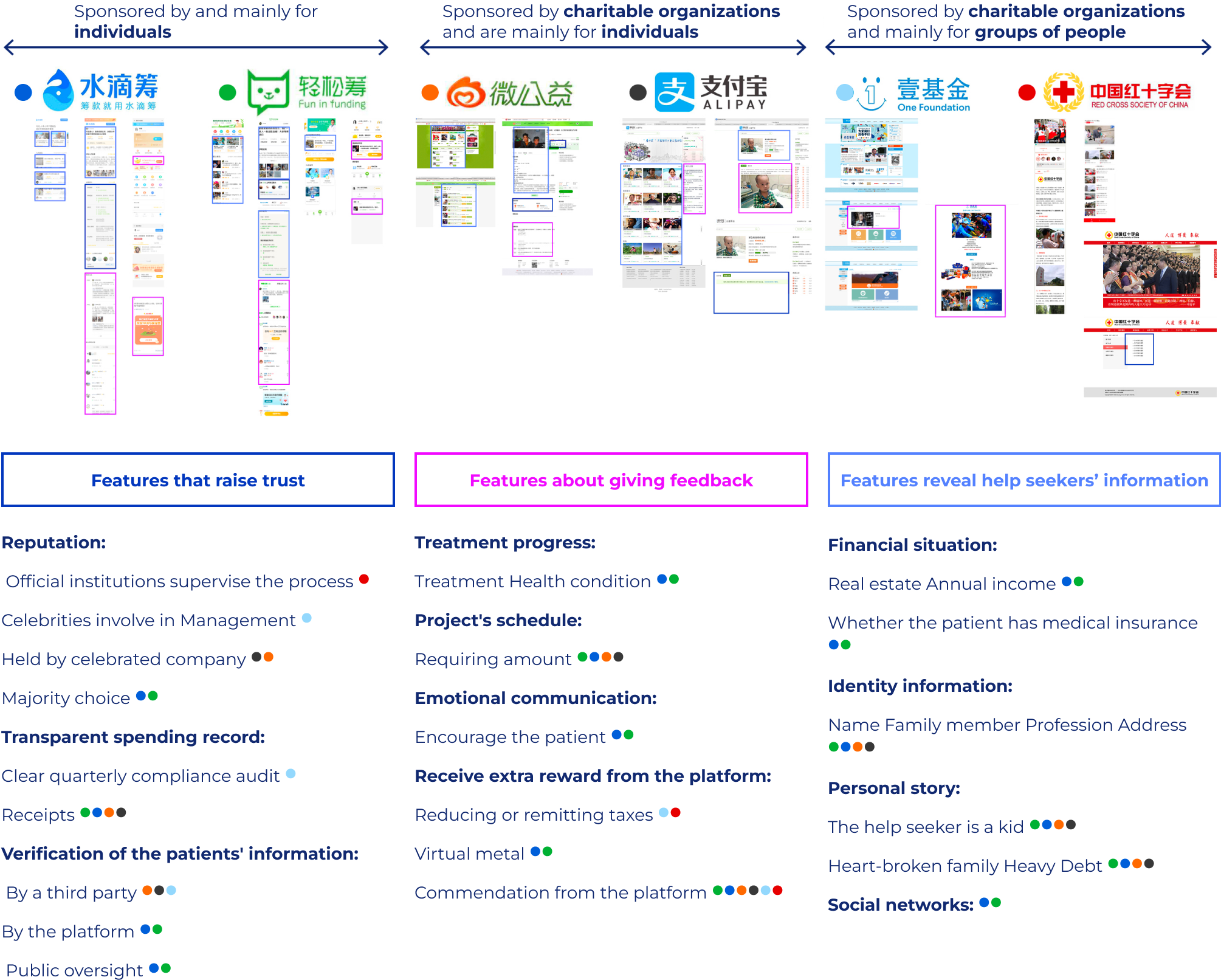
We designed a questionnaire to figure out the hierarchy of those factors in raising people's likelihood of donating. 77 questionnaires are collected and the statistics are shown below.

According to the user research, we concluded the 6 most important factors would affect people's likelihood of donating. From the perspective of the psychological states of the donors, we found the 6 factors can be classified into 3 categories: trust, emotional connection, and sense of achievability

According to the conclusion we drew from the user research concerning the 6 factors that potential donors are mostly concerned about, we conducted a comprehensive assessment of the 6 donation platforms.
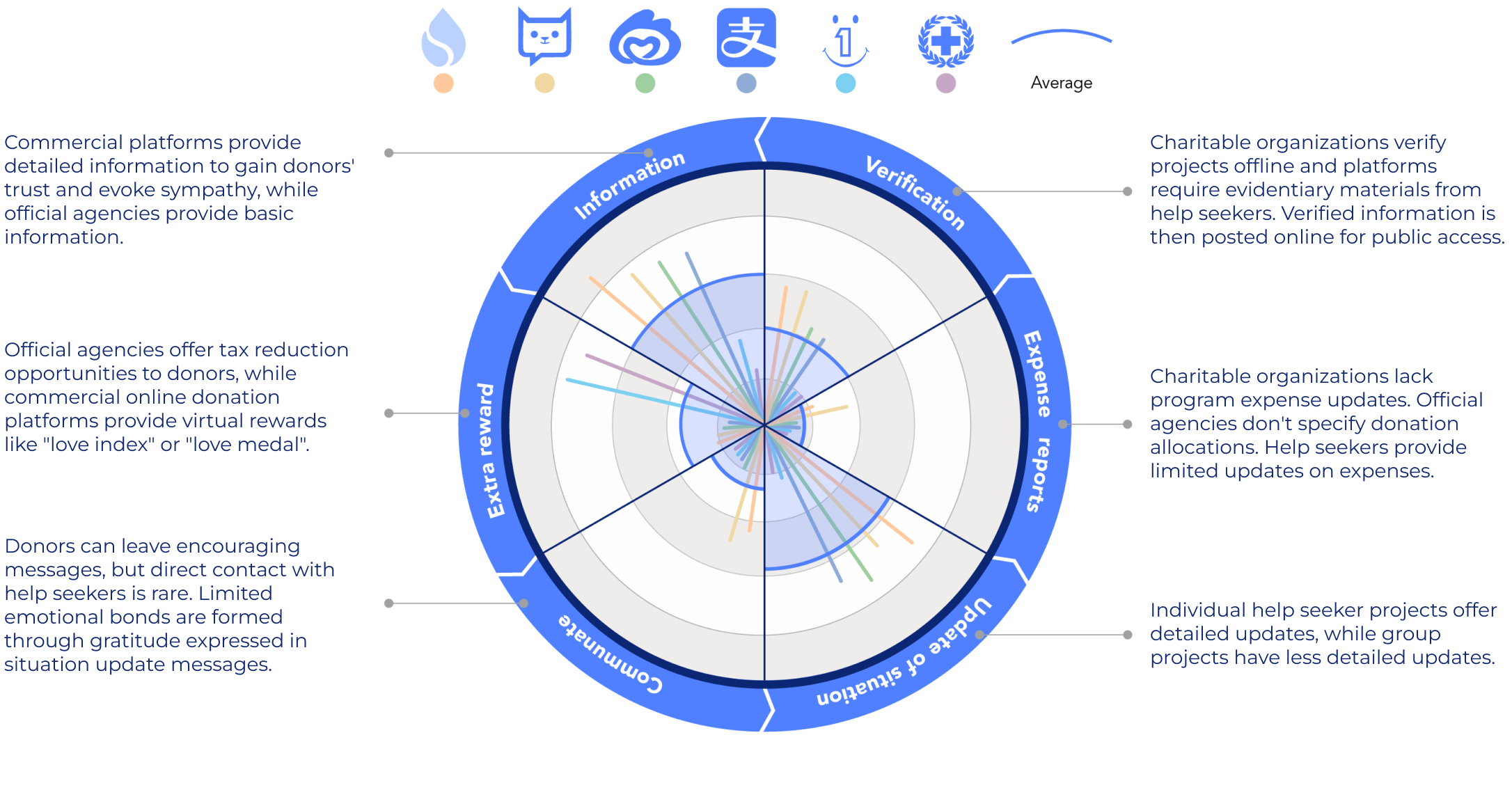
To identify the issues, we developed two personas based on donor concerns and mapped out their user journey by analyzing existing donation platforms.

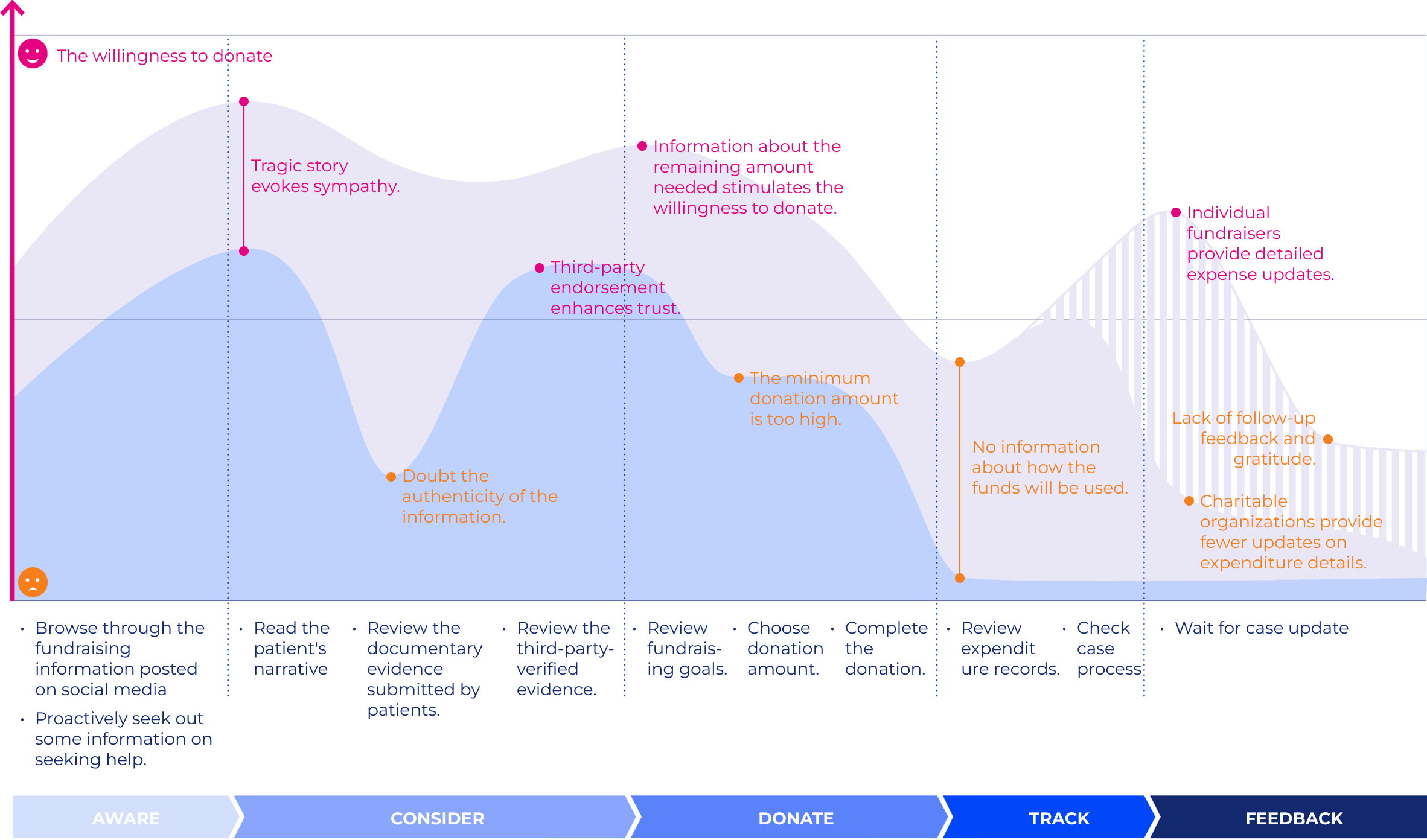

Given the need for encrypted personal information, an impartial platform, and detailed expense records, the application of blockchain technology naturally comes to mind. There are four distinct types of blockchain, each with its own unique characteristics.
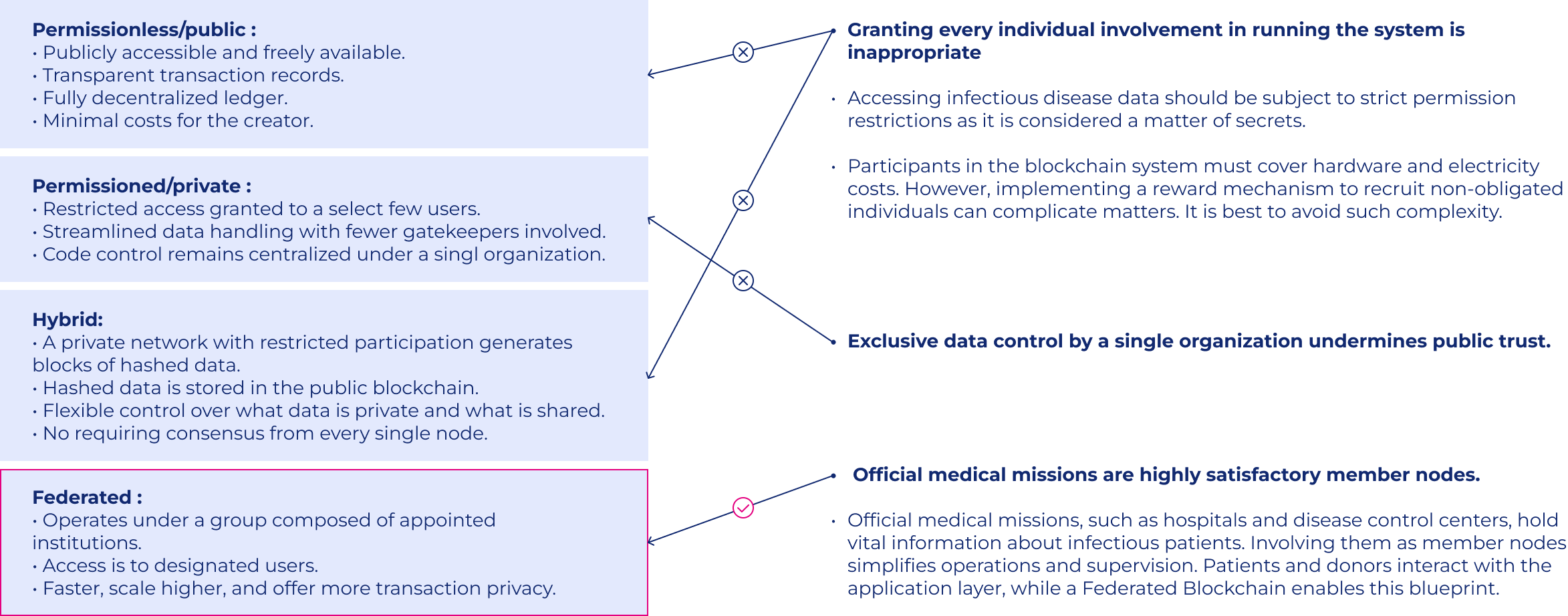
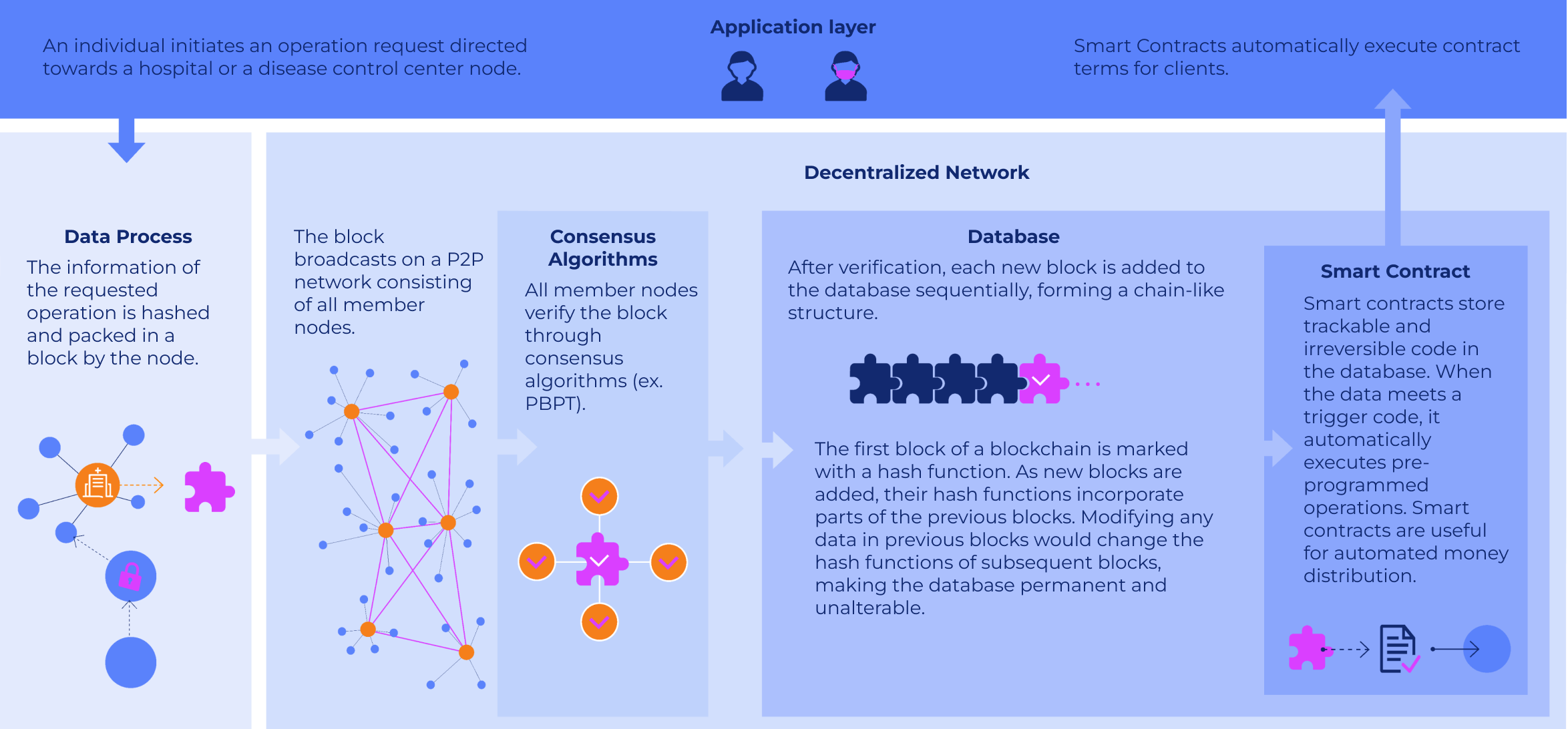
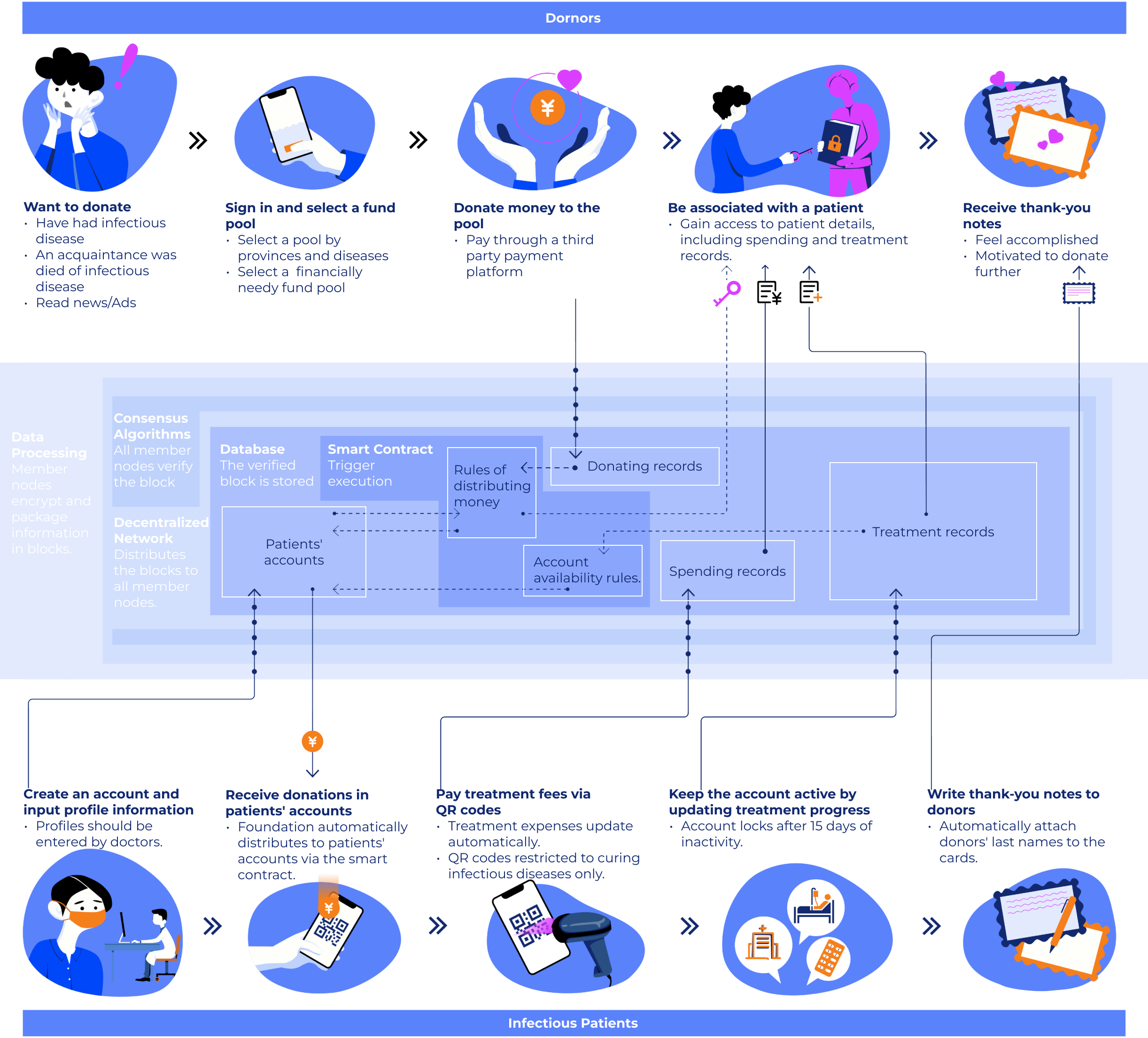
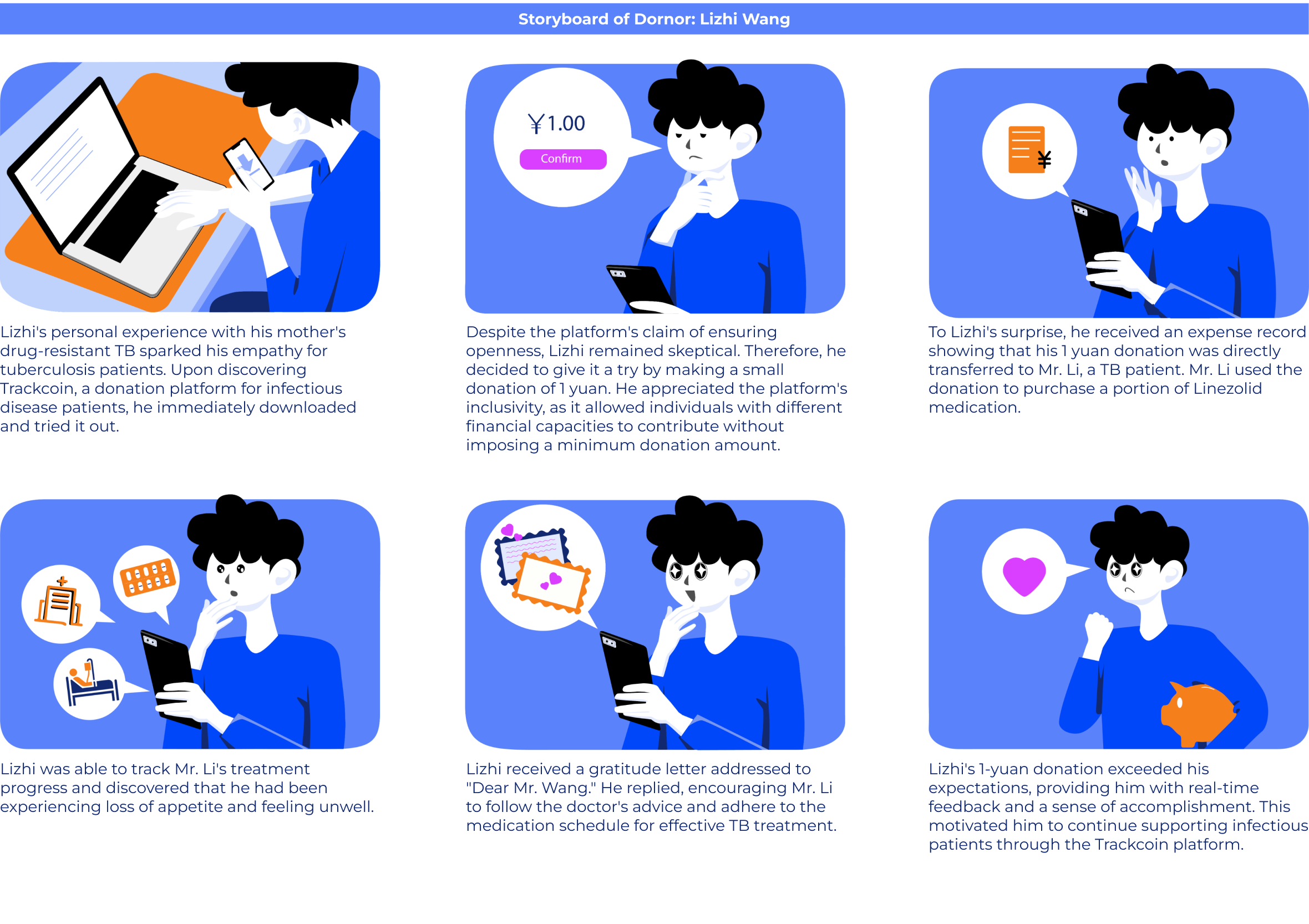

We invited 8 potential users for the user test.


Integrated user research insights, ideation, and low-fidelity prototyping into a wireframe with desired features: project donations, expense tracking, and feedback (e.g., thank-you notes, treatment progress).

We invited 4 potential users for the user test.

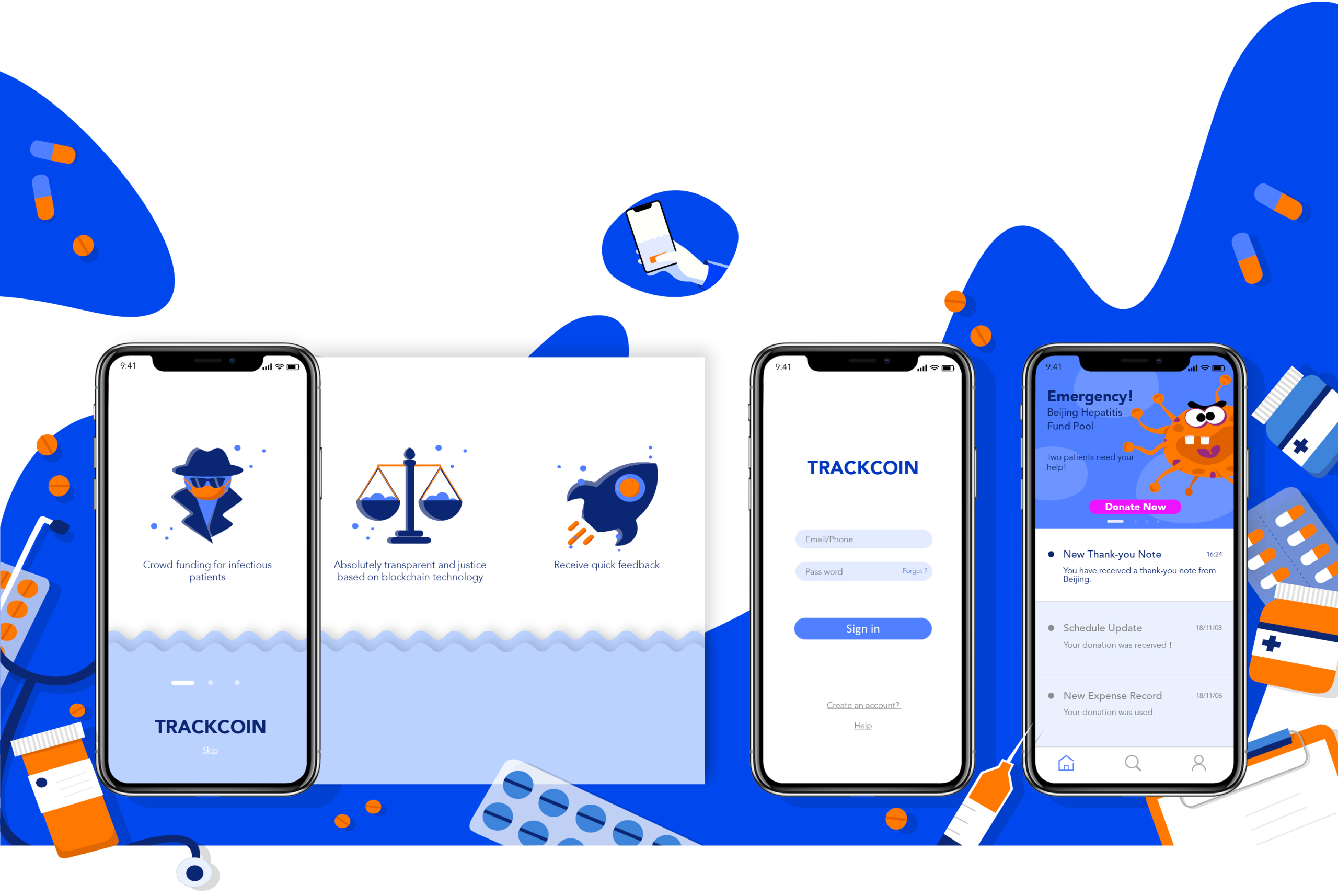
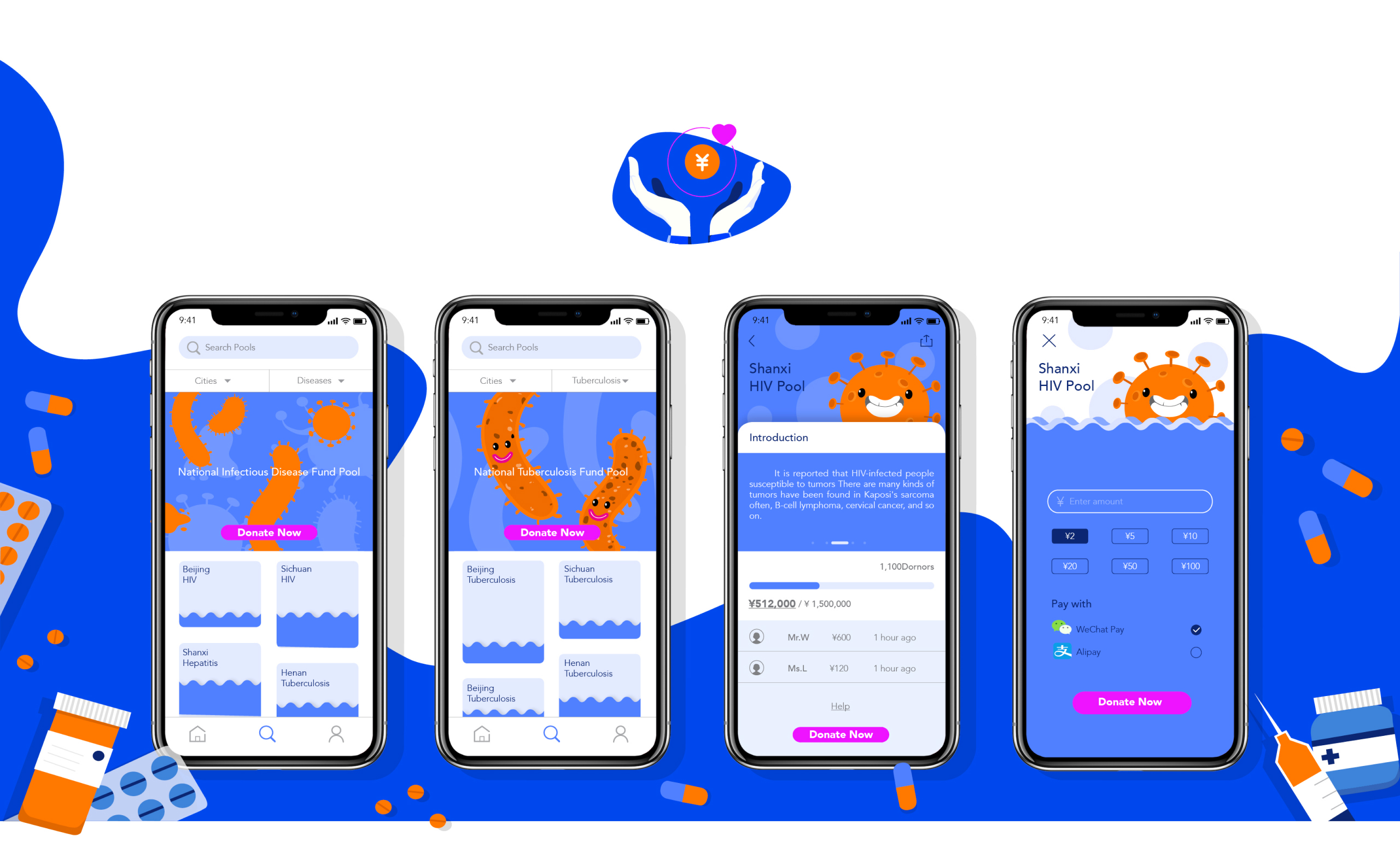
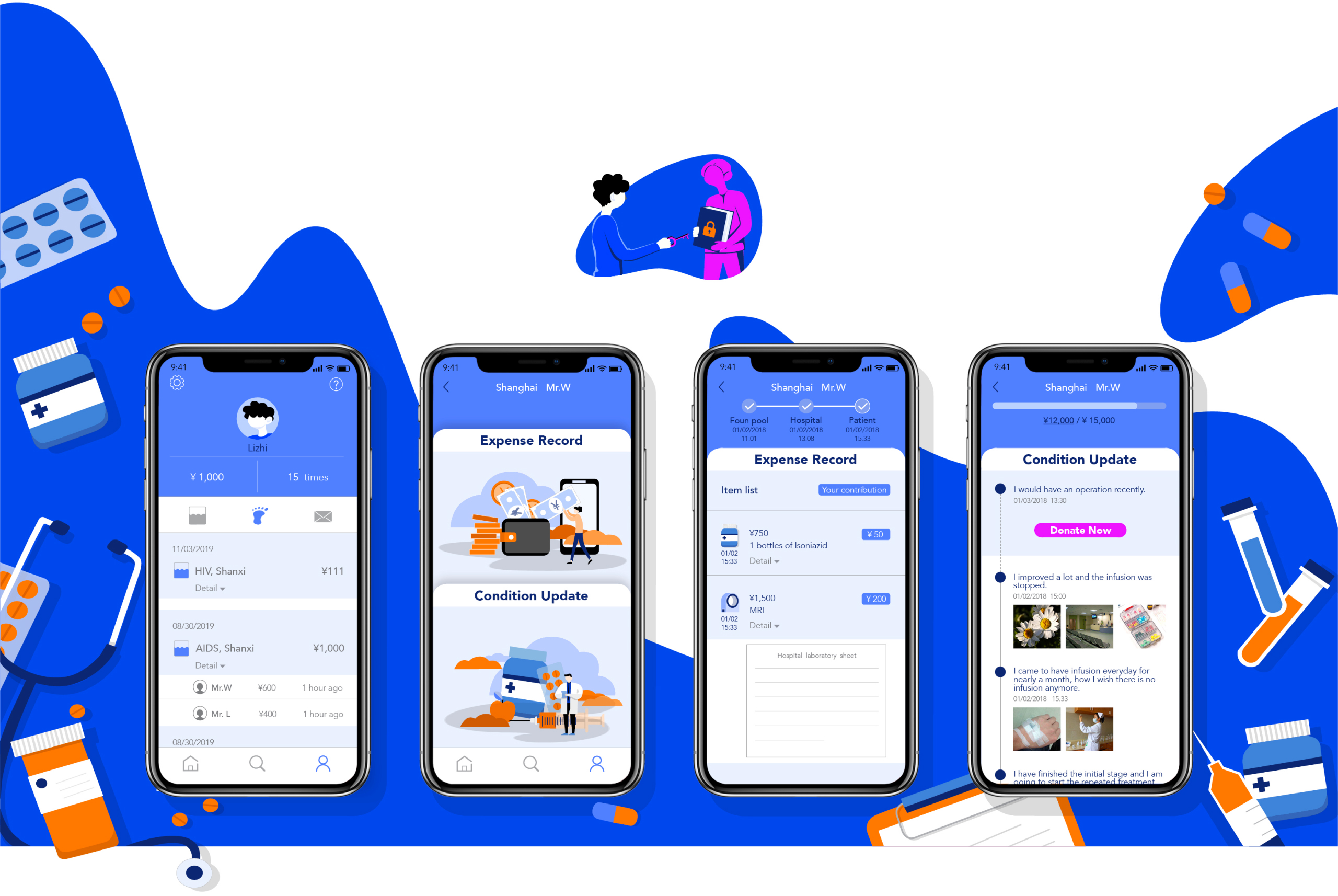

1. In the process of the interview and the usability testing, the participants did not actually implement donating, thus what they told us about their own feelings was only based on their assumptions. Therefore, we can only make the conclusion that through testing and iteration, our improved design is more concise, clear, and user-friendly. However, whether it could influence the real psychological expectation of donors or promote donating behaviors needs further research.
2. In this project, we did not take the interface for patients and doctors into consideration because we have no access to enough infectious patients and doctors to research. The interface on the patients; and doctors' side must be also highly demanded.
